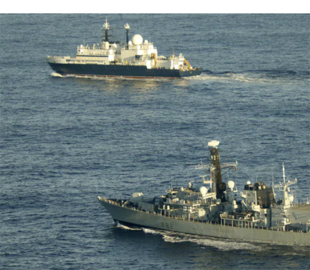
The Russian research vessel “Yantar” was in the English Channel for several days. All this time, it was monitored by ships of the Royal Navy.
Earlier this week, the Russian spy ship “Yantar” returned to the shores of Great Britain. This was reported by the Defense Minister John Healy to Parliament, as Metro reports.
The official reported that on Monday the Russian ship entered the exclusive economic zone of the United Kingdom about 45 miles from the coast, in the English Channel.
While the ship was moving through British waters, it was constantly monitored by two Royal Navy ships – HMS Somerset and HMS Tyne. The ship was also “surveilled” by RAF patrol aircraft.
“Let me be clear: this is a Russian spy ship, used to gather intelligence and map critical British underwater infrastructure,” the minister said.
The Defence Secretary added that the spy ship had previously been seen “skulking around critical British underwater infrastructure” in November 2024. But only after the head of the defense department allowed the Navy submarine to surface nearby did the “Amber” leave British waters and head towards the Mediterranean Sea.
In his message to parliamentarians, John Healy described Russia as the most serious and immediate threat to the UK and indirectly addressed Russian President Vladimir Putin.
“We see you, we know what you are doing, and we will not shy away from decisive action to protect this country,” the minister said.
Healy clarified that international maritime law, adopted at the UN level, limits the actions of countries against foreign vessels detected in their sovereign waters. However, together with NATO countries, the UK will strengthen its response to the activity of the Russian fleet. In particular, the Royal Air Force will allocate a reconnaissance aircraft, which will join the NATO mission to protect critical infrastructure in the Baltic Sea.
What is known about the vessel “Yantar”
Officially, “Yantar” is a vessel of the Russian Ministry of Defense engaged in ocean research. It was launched in 2015.
According to open data, the vessel with an autonomy of up to 60 days and a cruising range of 8,000 miles can simultaneously ensure the use of two autonomous deep-sea vehicles of the project 16810 “Rus” and the project 16811 “Consul”. The bathyscaphes can descend to depths of up to 6,000 meters and 6,270 meters respectively. They can, among other things, conduct video filming, explore underwater objects, carry out technical work on the seabed, and deliver or raise objects weighing up to 200 kg to the surface.

